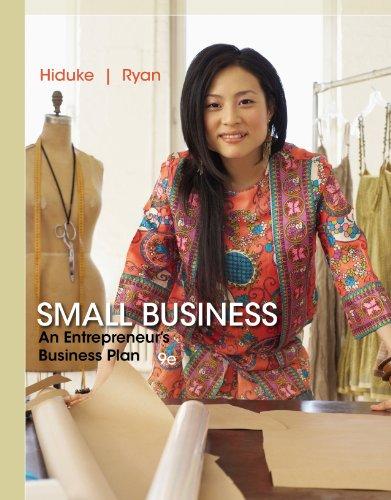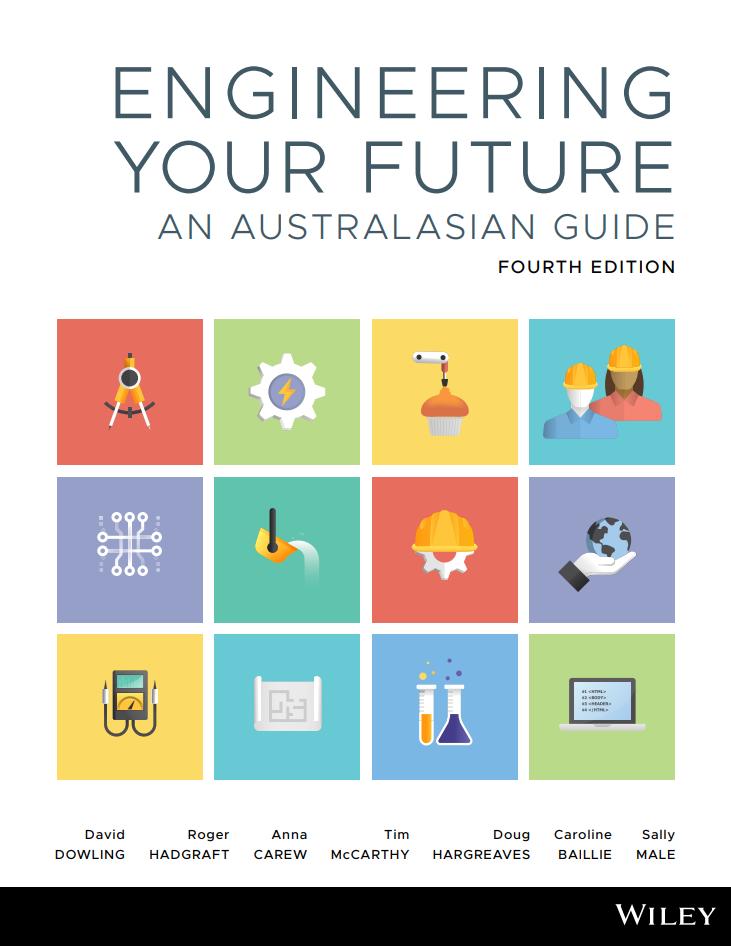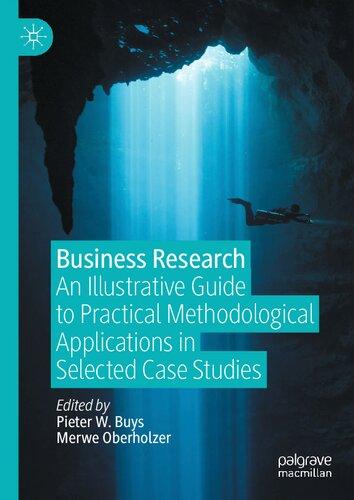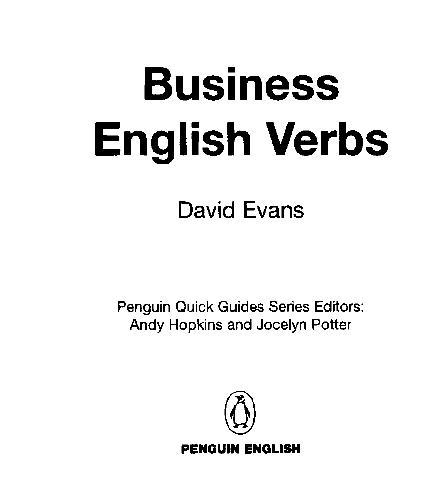Disclaimer
The information contained in this book is, to the best of the author’s knowledge, true and correct. Every efort has been made to ensure its accuracy. The author does not accept any liability for any loss, injury, or damage caused to any person acting as a result of the information in this book or for any errors or omissions.
In-house communications 57
Publicity 58
Sponsorship 58
Traditional advertising 59
Yellow pages 59
Newspaper 59
Classifed ads 60
Display ads 60
Magazines 60
Radio 61
Television 61
Outdoor advertising 61
Personal selling 62
Summary 63
Unique challenges 92
Competition 92
Pricing 93
Hospitality services 94
Food and beverage operations 95
Food and beverage management 95
Food and beverage marketing 96
Accommodation operations 97
Accommodation management 98
Accommodation marketing 99
Summary 99
8 Online operations 100
Virtual marketplaces 100
Amazon 101
eBay 101
Etsy 101
Merchant operations 101
Finding information 102
Placing an order 102
Making payment 102
Making delivery 103
Security and privacy 104
Registering a domain name 104
Building a website 104
Template website design 105
Custom website design 105
Choosing a hosting service 105
Promoting a website 106
Register with search engines 106
Online directories 107
Promoting online 108
Buying banner ads 108
Link advertising 108
Post announcements on blogs 108
Publish an e-newsletter 108
Promoting ofine 109
Mobile devices 109
Summary 109
9 Retail operations 111
Disruption and innovation 111
Retail location 112
Negotiating a lease 113
Rental payments 114
Lease term 114
Permitted uses 115
Interior layout 115
Display 116
Colour and lighting 117
Retail operating cycle 117
Purchasing 117
Pricing 118
Promotion 118
Stock control 118
Point of sale technology 119
Summary 119
10 Manufacturing operations 121
Location 121 Layout 122
Controlling cash fow 137
Profts are not cash 137
Cash fow budgeting 138
Step 1 forecasting sales 138
Step 2 identifying cash receipts 139
Step 3 identifying cash disbursements 140
Step 4 determining net cash fow 140
Step 5 determining the future cash position 141
Credit cards and cash fow 141
Accounting system 142
Balance sheet 142
Assets 142
Current assets 142
Non-current assets 143
Liabilities 143
Current liabilities 144 Non-current liabilities 144
Owner’s equity 144 Income statement 144 Sales revenue 144 Cost of sales 144 Gross proft 144 Operating expenses 145 Net proft before tax 145 Provision for income tax 145 Net proft after tax 146
Analysing proftability 146
Breakeven point 147 Pricing decisions 147
decisions 147
decisions 148
line decisions 148 Summary 148 12 Financing and taxation 150 Borrowing money 150
borrowing 151 Trade credit 151
Overdraft 151
Accounts receivable fnancing 151
Inventory fnancing 151
Bridging fnance 152
Long-term borrowing 152
Personal loan 152
Term loan 152
Mortgage 152
Shop around 153
Leasing 153
Equity capital 154
Internal equity capital 154
External equity capital 154
Government grants 155
Taxation 155
Pay-as-you-go (PAYG) 156
Goods and services tax (GST) 157
Income tax 157
Capital gains tax 158
Fringe benefts tax 158
Superannuation guarantee 158
State taxes 159
Facing a tax audit 159
160
161
and fnancing 162
163
163
fow 163
164
Introduction
We are in the midst of a new era in which the jobs of the 21st century are being created by people who run their own businesses. Small businesses can be found in all industries, but the most spectacular growth is taking place in personal and professional services, online businesses, and skilled trades. Incomes range from a few dollars each week to over a million dollars a year. Their goal is not just to make a living but also to create a sustainable business that provides a comfortable lifestyle for themselves and their family. At last count, there were over two million actively trading small businesses in Australia. Each one began with an idea!
Those who are inspired to have their own business are usually looking for a lifestyle that will give them interesting, stimulating, and challenging work. They want control over their time, including the fexibility to take time of when they wish. Many people prefer to work part-time without the responsibility and stress of a full-time job. A small business is one way of achieving these goals while at the same time providing the income to support an enjoyable standard of living. The reasons that lead people to start their own businesses are just as diverse as the businesses themselves.
• Lifestyle choice. Are you looking for a way to gain greater control over your work-life balance? Do you want to be autonomous, operate by your own rules, and have the freedom to decide when and where you will work?
• Career change. Do you have a distaste for wage slavery in a large company or public sector organisation? Do you yearn for something smaller, simpler, and more personally gratifying?
• Home business. Home businesses are popular among individuals who want to earn a living while staying close to home. The reasons might range from needing to care for other family members to the convenience of not having to commute for work.
• Retirement business. The Baby Boomer generation is entering retirement, and increasingly, they have been starting businesses. According to the Reserve Bank of Australia, the proportion of business owners over the age of 55 has nearly doubled in the past fve years. A small business ofers DOI: 10.4324/9781003394808-1
the prospect of an exciting change of pace as well as a tremendous way to stay engaged and remain productive. Many of these businesses operate on a part-time basis.
• Intentional entrepreneur. Are you the dreamer and the free spirit who has always wanted to have your own business? When you fnd the right business opportunity, you can test it by starting out on a small scale.
• Accidental entrepreneur. Have you been cast adrift in mid-career as a result of corporate or public sector restructuring? Are you looking for a way to use your talents, skills, and experience to set up your own business?
• Limited job prospects. Have you found yourself in a dead-end job with little chance of improvement? Some individuals consider starting a business out of necessity because their employment prospects are limited.
More than half of the small businesses in Australia are one-person operations called solo businesses. They typically take advantage of outsourcing some functions while focusing on their core strengths. They have no responsibilities for employees, they are in complete control of the business, and the profts belong solely to themselves. Relatively inexpensive and powerful computers, voice mail systems, mobile phones, the Internet, and e-mail have made the solo business functionally feasible and fnancially realistic.
A small business is a very special way to earn a living. Countless Australians have gone down this path, and for many, it has been a source of happiness and prosperity. Whatever the underlying reason, the key ingredient is a genuine desire to create a business. Those who take the plunge expect to beneft from the advantages of having their own business.
• You can be your own boss, you can be independent, and you can exercise your own talents and capabilities.
• You can develop your own ideas and work on something that is personally satisfying.
• You will have the chance to make money, maybe even a great deal of money, and you will not be dependent on a fxed wage or salary.
• You will have the prospect of achieving a feeling of personal worth, accomplishment, and recognition.
An idea is the frst step in creating a business. It can emerge unexpectedly, or you might stumble upon it inadvertently. What happened to your last idea? Do you remember it? What did you do with it? Ideas typically come and go without much thought. But what if they didn’t? Unlocking Small Business Ideas is intended to be your navigational guide to identifying an idea and turning it into a fourishing business. It describes how to look for small business ideas, how to evaluate an idea for its commercial potential, and how to transform an idea into a genuine business opportunity. The book is divided into four parts. Part A is about unlocking an idea. It explains a practical approach to spotting new ideas, assessing their commercial potential, and creating a blueprint
Introduction 3 for turning them into a business. It also describes what you need to do to get started and where to look for help. Part A concludes with a reality check to help you identify and evaluate an idea’s potential risks.
Part B is about unlocking a marketing strategy. It includes how to create a marketing strategy, how to use conventional marketing methods, and how to take advantage of digital marketing methods. Part B concludes with a reality check to help you evaluate the prospects for capturing a target market.
Part C is about unlocking an operating strategy. It explores key issues in organising service operations, online operations, retail operations, and manufacturing operations. Part C concludes with a reality check to help you identify and evaluate potential operating constraints.
Part D is about unlocking a fnancial strategy. It includes how to control cash fow, how accounting systems work, and how to interpret fnancial information. It also describes how to obtain fnance and how to comply with the Australian taxation system. Part D concludes with a reality check to help you decide if the fnancial projections make sense.
The book concludes with an appendix that combines each of the reality checks into a Commercial Feasibility Rating. It provides feedback about your idea to help you make an informed judgement about whether there is enough commercial potential to pursue it further. It is an exercise that can be repeated whenever you make changes that are intended to improve the commercial potential of the idea.
1 Turning ideas into opportunities
The pandemic had a big impact on how businesses operate, leading to fresh concerns about health and safety, a rapid uptake of digitalisation, and a renewed emphasis on buying locally. With this in mind, we are looking for product ideas, service ideas, market ideas, and occasionally a genuinely radical idea. Not all ideas are good ideas, however, so a method for assessing ideas for their commercial potential is presented. Creating a practical blueprint for commercialising an idea signifcantly improves the prospects for a successful business. It is the key to making a smooth transition from the initial idea to a going concern. It identifes the target market and the plans for making sales, the day-to-day procedures for running the business, the fnancial results that can be expected, and a checklist of things that are needed to become operational.
Pandemic legacy
The pandemic crisis has culled a lot of outdated business practices. It has fundamentally changed how and what people buy, and it has accelerated many of the structural changes that were already underway. Customers still want to shop, travel, eat out, be entertained, and socialise. How they engage in these activities, however, has been afected by the pandemic experience. Three key trends resulting from the pandemic are health and safety, going digital, and buying locally.
Health and safety
The pandemic has focused everyone’s attention on health and safety. Some people remain hesitant to venture out of the house or take part in activities where they previously felt exposed. Others are making fewer visits inside businesses because of their concern about coming in contact with others and jeopardising their health. Customers have these concerns in the back of their minds, and health and safety should be part of every post-pandemic business strategy. Most businesses have already implemented procedures to protect the health and safety of their customers. Whether it is a restaurant, a retail outlet, or holiday accommodation, the key is to demonstrate that health and safety are a priority.
DOI: 10.4324/9781003394808-3
Things like more frequent and efective sanitising, limited in-store interactions, convenient contactless ways to order and pay for goods, and options for pickup or delivery are important to post-pandemic customers.
Going digital
The digital revolution was already well underway when the pandemic accelerated major changes in how customers engage with businesses. A lot of people tried online grocery shopping for the frst time, and many have permanently converted to this way of shopping. Customers now know what is possible online, they have the tools to take advantage of what it ofers, and they are increasingly comfortable using them. These are major and lasting changes in which new habits have been formed and new expectations have been created. It sends a strong signal that an online presence is now an essential element in practically every business strategy.
More than half of small businesses in Australia don’t have a website, despite the fact that most of the population is connected to the Internet. These businesses are missing out on a massive amount of exposure, and they are losing sales. Before the digital revolution, the options were essentially limited to print and media advertising. Today, the Internet has changed everything. There are social media platforms, websites of all kinds, downloadable apps, email, and more. Even businesses that don’t sell directly online can use the Internet to get customers’ attention.
Technology has provided an essential lifeline to individuals and businesses during the pandemic, and perceptions of its value have increased. People are creatures of habit, and these new behaviours have become habits. The issue is not more technology; it is what you can do with it. If you are serious about being in business in the post-pandemic era, then you need to approach every aspect of your business with a digital mindset. Visit business.gov.au/asbas for information about how you can access individual support through ASBAS Digital Solutions. This government programme ofers small businesses lowcost, high-quality advice on a range of digital solutions to meet their business needs.
Buying locally
When the pandemic disrupted supply chains, people began looking for local suppliers to fulfl their needs. They are now accustomed to the convenience of nearby businesses and local markets. For these loyal customers, it is not price or product variety that is most important, it is the novel ways in which they have adapted to the post pandemic environment. For example, businesses that ofer delivery options such as curb side pickup or free contactless delivery have enjoyed enthusiastic support. Many local businesses moved to online sales during the pandemic in an efort to recuperate losses and stay in business. Whether it was on their own platform or through social media, the increases in online
Turning ideas into opportunities
sales have demonstrated that customers have embraced local businesses that joined the digital revolution.
Spotting ideas
It isn’t necessary to discover a unique idea or come up with an invention involving some enormous leap of the imagination. There is simply no correlation between commercial success and the creative or technological brilliance on which an idea is based. Ideas can consist of modifcations to products or services, fnding new markets for existing products or services, or inventing something new.
Product ideas
Product ideas consist of improving, developing, or acquiring a product aimed at a particular target market. For example, organic and environmentally friendly versions of well-known consumer products are product ideas. Introducing a domestic version of an industrial product is a product idea. Product ideas that are totally new are exceedingly rare. Typically, it is much easier to look for an existing product that has the potential for one or more of the following modifcations:
• enhancing its quality
• broadening or narrowing the range ofered
• improving usability, performance, or safety
• changing the delivery method, packaging, or unit size
• adding new features, accessories, or extensions
• simplifying or making it more convenient
• increasing access, portability, or disposability
• changing colour, material, or shape
• making it larger/smaller, lighter/heavier, or faster/slower.
Service ideas
A service business performs a task for the customer. The task generally requires specialised training, experience, or equipment. The key drivers of service ideas are productivity and reliability underpinned by expert knowledge, skills, and experience. Some ideas are focused on the person providing the service, while others are focused on specialised equipment to deliver the service. Service ideas tend to follow one of three strategies. Standardisation is a service strategy that minimises costs, maximises productivity, and produces a uniform service. Flexibility is a service strategy aimed at providing a broad range of customised services. Penetration is a service strategy designed to ofer several services to the same customers. Look for ideas that are valued, afordable, and capable of being efectively advertised and promoted.
Market ideas
Market ideas consist of fnding new customers for existing products or services. It may be a diferent geographical area, a diferent type of customer, or a different distribution method. Franchising has been a spectacular example of new market ideas with thousands of franchisees operating across a variety of markets. When you see a successful business concept in another place, consider the possibility of applying the same idea in your market. Also, keep in mind that a website can give you access to markets all over the world.
Radical ideas
A radical idea is a completely new product or service. It is radical because the idea is novel, and it has the potential to upset the way in which established products or services have previously operated. These are typically new inventions that take a long time to develop and are costly to bring to market. The risks are extremely high, but if you get it right, so are the rewards. Radical ideas are a combination of foresight and chance. Some radical ideas are pushed by technological developments, but the majority are pulled into existence by a market that is looking for them.
Assessing commercial potential
A genuine business opportunity is an idea with compelling commercial potential. Some ideas have commercial potential, but many don’t. The question is how to tell them apart. Assessing commercial potential consists of a practical evaluation of the potential risks involved, the capacity to capture a market, possible operating constraints, and the expected fnancial outcomes.
Potential risks
External risks have the potential to restrict the commercial potential of an idea. Can it comply with the various legal, safety, and other regulatory requirements? Is it vulnerable to changes in technology? Is it exposed to changes in the economy? Will it be afected by government policy? To what extent could sales depend on factors that are beyond your control? Internal risks are diferent because you can take steps to manage them. Have you got a plan for making the transition from the initial idea to a business operation? Are you sure you thoroughly understand what customers want? Is it possible to produce and deliver the product or service in the way it is intended? Will there be enough money to make it through the start-up phase? Can you withstand the pressure on your personal fnances, your career, your family, and your emotions? Questions for identifying external and internal risks are presented at the end of Part A. Together, they provide a reality check on the risk profle of an idea.
Capturing the market
Anticipated demand is one of the most important elements in evaluating an idea, and it is also one of the most difcult to assess because it requires an understanding of customer behaviour. It’s not about forecasting sales at this early stage; it’s about painting a picture of the factors that push demand. What do you know about the relative size of the target market? Is it increasing or decreasing? Will demand be stable or unstable? How long will demand for this idea last? What scope is there to extend this idea into other products or services?
Market acceptance is important in converting anticipated demand into sales. It afects the rate of adoption and the extent to which the market can be captured. There are a variety of reasons why customers may accept or reject an idea. Does it fulfl a genuine need? Can prospective customers easily recognise the benefts? Is it compatible with their existing attitudes or patterns of use? Is it complicated to consume or use? Will it be difcult or costly to distribute?
Market strength is concerned with how an idea is likely to fare in the battle of the marketplace. How is the idea diferent from similar products or services? How will customers value it compared with similar products or services? Is it vulnerable to the negotiating leverage of customers? Is it vulnerable to the negotiating leverage of suppliers? Is it susceptible to existing, potential, direct, or indirect competitors?
Questions for evaluating anticipated demand, market acceptance, and market strength are presented at the end of Part B. Together, they provide a reality check on an idea’s capacity to capture its target market.
Operating constraints
Successfully commercialising an idea depends on having the right expertise and resources to exploit it. This includes marketing, technical, fnancial, operational, and managerial expertise. The relative importance of each depends on the sophistication of the idea and the nature of the market it faces. Exploiting an idea also depends on having access to the right resources. Resources complete the basic dimensions of an operations strategy, including fnancial resources, physical resources, human resources, critical information, and access to help and assistance. Questions for evaluating the expertise and resources required to commercialise an idea are presented at the end of Part C. Together, they provide a reality check on the constraints on operations and where additional expertise and/or resources are needed.
Financial projections
Having identifed the best mix of expertise and resources puts you in a position to see if an idea makes fnancial sense. The starting point is a realistic forecast
of sales revenue. Given the level of activity in the sales forecast, a projected balance sheet refects what assets are needed to operate the business and how they can be fnanced. A projected income statement reveals if the idea is proftable and how long it might take to break even. Finally, a cash fow budget tells you if there is going to be enough money to sustain the business until it becomes cash fow positive. A reality check for evaluating the fnancial projections are presented at the end of Part D.
Creating a blueprint
A blueprint sets out how you will make the transition from an idea to a going concern. It’s not rocket science. It is the result of a little research and a big dose of common sense. It identifes the characteristics of the ideal customer and how you intend to capture them. It includes your methods for generating sales, the day-to-day procedures for operating the business, and the fnancial results you expect to achieve. The questions that follow are designed to help you structure your blueprint.
• What is my business? What type of business do I intend to enter? What will I call it, how will it be organised (as a proprietorship, partnership, or company), and what will be its main activities?
• What is my product or service? Exactly what am I going to sell? Is my product or service already on the market, or is it still in the development stage? If it is in the development stage, what is the roll-out plan to bring it to market? What factors make this product or service unique or superior? Will there be opportunities to develop related products or services? What will it cost to make/buy/provide the product or service? Can I price the product or service competitively and still earn a good proft?
• What is my target market? There are four steps in determining the nature and size of the target market.
• Who are my customers? Are they individuals, households, or businesses? Why will they buy my product or service?
• How big is the target market? How large is the pool of prospective customers? What are they likely to spend on my product or service?
• Who are my nearest competitors? What do I know about their operations? What will be my competitive strength? What share of the market do I think I can capture?
• Based on the previous steps, what sales do I think I can realistically expect?
• How will I generate sales? How will I stake a claim to the target market? How will I satisfy my customers’ needs? What will be my pricing policy, and what will be my methods for promotion and distribution?
• How will I operate? What is the plan for getting organised and into operation? What equipment, stock, or other resources will I need to acquire? What materials or supplies do I need? What are the day-to-day processes and procedures that I will set up? Who will do the work? If I have staf, will they need to be experienced, or will I provide training? What functions can I outsource? How can I use technology in my operation?
• What are my fnancial projections? Financial projections are primarily concerned with cash fow. The objective is to be confdent about the fnancial viability of the business. Make sure the projections are not overly optimistic. Initial fnancial projections typically consist of your expected sales, your start-up and operating expenses, and the amount of cash you will need to sustain the business until it becomes cash fow positive.
What follows is an example of a blueprint for a one-person, home-based, online business. It is simple, brief, and informal.
Toddler togs online
My name is Catherine Grace, and I live in an Australian capital city. I worked for a clothing manufacturer as a pattern maker for fve years after I left school. When my children were toddlers, I used my skills to design and make all of their clothes. I now have over 400 unique patterns for children aged 1 to 4 that I would like to sell online. I intend to operate the business part-time from my home.
MARKETING STRATEGY
I will offer sewing patterns for toddler clothing from my own website. The patterns will be delivered online as a PDF fle, and they will include a list of fabrics and notions together with step-by-step sewing instructions. Each pattern includes sizes 1 through 4, and it can be printed on a home printer using A4 paper. The price per pattern is $9.90 including GST. The patterns are copyrighted and will be sold as a licence to download, save, and reprint them for personal use. Personal use includes small-scale production in a home business for sale in a local market.The licence does not include forwarding, copying, or otherwise distributing the PDF fle, or using it in production outside the home on a commercial scale. The target market for Toddler Togs Online sewing patterns consists of three main segments.
• Mothers with toddlers who want to sew clothing for their own children using these unique designs.
• Individuals who enjoy sewing and want to use these designs to make clothing for the children of relatives and friends.
• Individuals who want to use these designs as part of a home-based business to make garments can sell them in local markets or on online platforms such as Etsy.
When Toddler Togs Online becomes established, there are opportunities for expansion. One possibility is to sell complete kits that include the pattern and instructions, fabric chosen from a list, and any required notions. The Internet makes it possible to reach markets globally, and another possibility is to target customers outside of Australia.
The mainstay of my marketing profle will be my website. It will feature a complete portfolio of my patterns, including high-resolution photos and detailed descriptions. It will be searchable across a variety of themes. It will also contain answers to frequently asked questions and articles related to sewing for toddlers together with a blog in which customers can share their experiences. The website will be fully functional to handle online purchases. My objective is to steer online visitors to my website without using paid advertising. I intend to do this in several ways.
• While the majority of sales are expected to come from my website, I will also offer patterns on Etsy, a virtual marketplace for handmade articles. I will do this to make Etsy visitors aware of my website.
• The social media sites that are popular with my market segments will be investigated, including Facebook, Pinterest, Twitter, and Instagram, in addition to specialist social media platforms aimed at people who are interested in sewing.
• The frst pattern will be offered free to visitors who register on my website and agree to join my email list. This will not only create their account but also enable them to see and evaluate a pattern with no risk.
• I will produce a quarterly newsletter distributed by email. It will feature one of the themes in my collection together with any new designs. It will also have a link back to my website for more information.
OPERATING STRATEGY
Each pattern will be digitised by scanning the hand drawn pieces. The. jpg fles will be edited in Photoshop and combined into a complete pattern in the form of a PDF fle. Each of the four sizes will be in a different colour, making it easy for the user to cut out the size they want.
I intend to hire a professional website designer for the development of my website. I have a quotation from Wombat Web Weavers for the design and installation of my website for $10,000. It includes registering my domain name and building a website that includes a shopping cart, checkout, and online payment facilities. It also includes installing my website on a hosting service and training me to maintain it.
The website will contain pictures and descriptions of more than 400 patterns. Customers will be able to view the patterns and choose the ones they
want by placing them in a shopping cart. When they are ready to complete their purchase, they will proceed to the checkout to enter their account details and email address. They will be able to make payments through PayPal, Visa, or MasterCard. When payment has been accepted, a link to the pattern will be sent to their email address. Using the link, they will be able to download the pattern and instructions using Adobe Reader, save them to their computer, and print them out on any home printer that uses A4 paper. If any pattern piece is larger than A4 paper, it will print out as two sheets that can be joined together.
FINANCIAL PROJECTIONS
I have $20,000 in savings that I am prepared to invest in the business. Before I can begin operations, I will need to pay $16,250 in start-up costs. The cash fow forecast for the frst year begins with modest sales that gradually increase to 500 downloads per month. Most of the expenses (except ‘Other fees’) remain the same regardless of the level of downloads. I don’t intend to take any money out of the business during the frst year.
The Year 1 cash fow forecast shows negative cash fow for the frst three months, becoming cash positive in the fourth month. At the end of twelve months, the net cash position is forecast to be $20,541. If the actual result is similar to the forecast, I shall withdraw $20,000 out of the business and return it to my savings.
The Year 2 cash fow forecast assumes that sales will remain constant at 500 downloads per month. I have done this to demonstrate that the business is sustainable with no further growth while generating $3,000 per month in drawings. The Year 2 forecast will be recast at the end of Year 1 to refect what I have learned during the frst twelve months and any plans I may make for further expansion.
CHECKLIST OF THINGS TO DO
• Register a business name.
• Register an ABN.
• Register for GST.
• Install an NBN service and a business landline.
• Find an available domain name and reserve it.
• Set up an email account.
• Open a business bank account and a merchant account.
• Open a PayPal account.
• Ask my accountant to set up a simple accounting system.
• Check to see if I need any business insurance.
• Ask my solicitor to draft the terms and conditions for downloads.
• Ask Wombat Web Weavers for a draft contract for the design and installation of my website. Ask my solicitor to review it.
• Set up my social media accounts and link them to my new website.
• Research my competitors including their offerings, prices, and websites.












